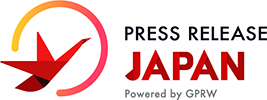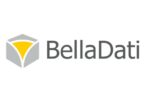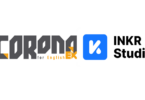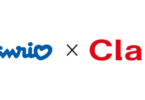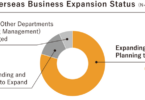Aug 27, 2013 – “Many large industrial users face switching from a hazardous compound to a more environmentally benign solvent that has a higher cost, or that compromises product quality. The perfect solvent is not available, so manufacturers must make a tradeoff between efficiency, cost and environmental impact.”
Driven by increasing environmental and regulatory pressures, and concerns over toxicity to humans, the global solvents market continues to undergo significant changes as demand for “greener” solvents has increased in developed countries during the last 15 years, while demand for traditional solvents (outside of China) continues to decline, according to a new IHS Chemical (NYSE: IHS) global market research report.
The 427-page report, the IHS Chemical Global Solvents Report: Opportunities for Greener Solvents, provides an in-depth analysis of the global solvents market, including supply and demand, suppliers and market outlook for solvents, but also regulatory insights and a comprehensive comparison of the different solvent types relative to effectiveness, toxicity and environmental impact.
Nearly half of all solvents used globally are for paints and coatings, but other uses include adhesives, inks, pharmaceuticals, chemical processing, metal and dry cleaning solutions and agriculture.
According to the report, global consumption of solvents is significant, with more than 28 million metric tons (MMT) consumed in 2012. China accounted for more than 9 MMT of that global demand, which was nearly double the 5 MMT in solvent consumption by North America. Europe consumed nearly 6 MMT of solvents last year, followed by other Asian countries (as a group) at 4 MMT, while Japan consumed just 2 MMT of solvents.
Demand for solvents in China is expected to increase approximately 5 percent to 6 percent per year during the next few years, said IHS, but solvent demand is expected to remain flat or decrease in the U.S. and E.U. due to more environmental regulations; the penetration of technologies that consume little, if any solvent; and greater solvent recovery and recycling. Another factor impacting demand is the off-shoring of industrial processes to China that consume large amounts of solvent, such as the coating of wood furniture and the assembly of shoes using solvent-borne adhesives.
“The overall solvents market is diminishing in industrialized countries, mainly as a result of regulatory pressures to reduce emissions that cause lower-atmospheric smog and, in some cases, pose health threats,” said Eric Linak, specialty chemicals analyst at IHS Chemical and lead author of the study. “Many large industrial users face switching from a hazardous compound to a more environmentally benign solvent that has a higher cost, or that compromises product quality. The perfect solvent is not available, so manufacturers must make a tradeoff between efficiency, cost and environmental impact.”
Solvents are one of the most comprehensively regulated classes of chemicals, and tend to be regulated collectively as volatile organic compounds (VOCs), which contribute to lower-level ozone formation.
Both the U.S. and Europe have imposed stricter restrictions on solvents during the past 20 years, particularly with European passage of the Registration, Evaluation and Authorization of Chemicals (REACH) legislation in 2007, which requires toxicity evaluations on thousands of substances. To comply with solvent-emission regulation, manufacturers have the option to install engineering controls to limit emissions. In the dry cleaning industry, for example, emissions of perchloroethylene have been severely curtailed as users have installed specially designed cleaning and recycling equipment to decrease emissions by as much as 90 percent (see related chart).
Consumption in paints and coatings accounts for the largest share of the global solvent market at 40 percent of solvent use, according to the IHS report. Despite the trend during the last 30 years toward technologies that contain less solvent (e.g. powder coatings, high-solids and waterborne coatings), there is still significant use of solvents – nearly half of all coatings used are still solvent-based.
Said Linak, “However, this percentage will likely continue to decrease as more restrictive coatings regulations are scheduled to come into effect in the U.S. and the European Union during the next five years.” There is growing use, the report noted, of “VOC-exempt” solvents in the U.S. that have negligible contribution to lower atmospheric pollution.
Solvents that are less hazardous to humans and to the environment are part of the “green chemistry” movement, including supercritical CO2, which can be used for extraction. Other promising green solvents currently being researched, but in limited use today, are ionic liquids, which have essentially no vapor pressure, so there is no dissipation to the environment.
Linak said that several bio-based materials have been available for 10 to 15 years, and have enjoyed some commercial success in niche markets. “The opportunity to develop and market solvents with lower ecological and toxicological profiles is excellent, especially with the strong global green movement, and increasing regulatory oversight of the solvents industry.”
For more information on the IHS Chemical Global Solvents Report: Opportunities for Greener Solvents, please contact susan.wright@ihs.com. To speak with Eric Linak, please contact melissa.manning@ihs.comor press@ihs.com.
About IHS( www.ihs.com)
IHS (NYSE: IHS) is the leading source of information, insight and analytics in critical areas that shape today’s business landscape. Businesses and governments in more than 165 countries around the globe rely on the comprehensive content, expert independent analysis and flexible delivery methods of IHS to make high-impact decisions and develop strategies with speed and confidence. IHS has been in business since 1959 and became a publicly traded company on the New York Stock Exchange in 2005. Headquartered in Englewood, Colorado, USA, IHS is committed to sustainable, profitable growth and employs approximately 8,000 people in 31 countries around the world.
IHS is a registered trademark of IHS Inc. All other company and product names may be trademarks of their respective owners. Copyright © 2013 IHS Inc. All rights reserved.
###
Contact:
IHS Media Relations, +1 303 305 8021
IHS Media Relations
press@ihs.com
or
Melissa Manning, +1 832-458-3840
melissa.manning@ihs.com
Original Source: Mounting Environmental and Regulatory Pressures Driving Global Solvents…
